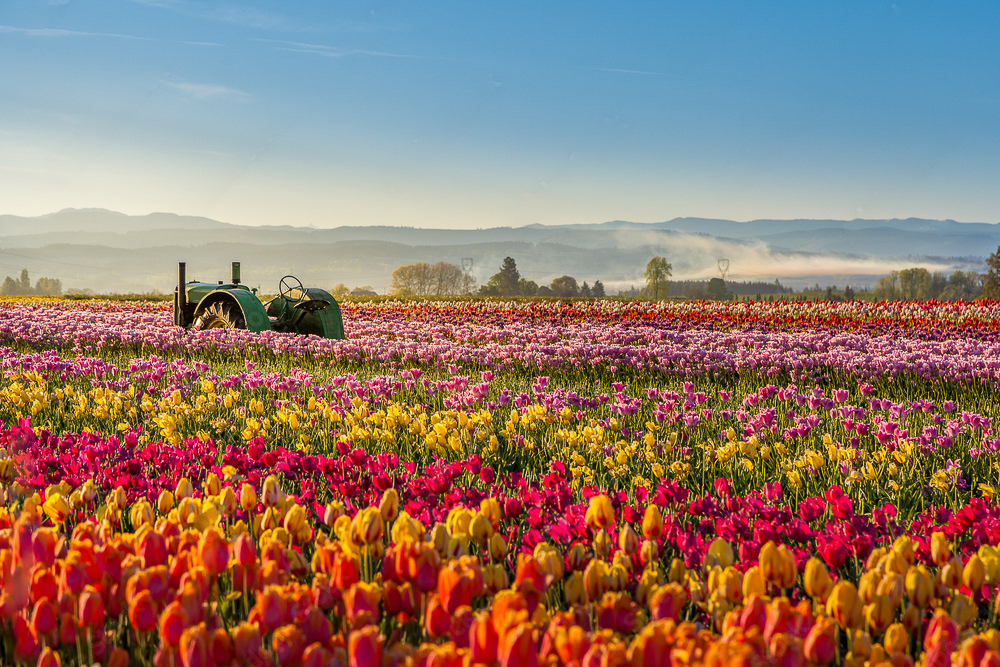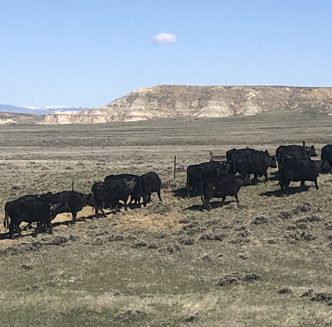Easter in Bloom: Easter’s agrarian roots are deeply intertwined with the floriculture industry

Easter, which will be observed on April 20 this year, is the oldest of the Christian festivals, and like many holidays celebrated around the world, this popular spring celebration has agrarian roots.
In fact, Easter and floriculture are deeply intertwined, as flowers have long been a significant part of holiday traditions, symbolizing rebirth, renewal and new hope.
Since the arrival of spring blooms coincides with the Easter holiday, flowers have become a natural part of festivities, often used to brighten homes and churches and creatively showcased during parades and festivals.
Historical connections
According to multiple sources, the tradition of using flowers to adorn gathering places during the Easter holiday dates back centuries ago and is deeply rooted in both religious symbolism and historical practices.
The association between the two can be traced back to pre-Christian pagan traditions, where the arrival of spring was celebrated with festivals honoring fertility and new life. The delicate beauty of flowers became a natural symbol of the season’s overarching theme of rebirth and renewal.
Over time, these pagan customs became intertwined with Christian celebrations, resulting in the adoption of flowers in many holiday rituals worldwide.
Symbolism
In many cultures, specific flowers hold deep meaning and play a role in cultural celebrations.
In the U.S., some of the most iconic springtime florals include lilies, tulips, daisies, daffodils, hyacinths and azaleas.
Sources note lilies, especially the Easter lily, have become synonymous with the Easter holiday, as their pure white petals symbolize purity and the resurrection of Christ, while the vibrant hues and “egg-shaped” blossoms of tulips symbolize love and the arrival of spring.
Daisies are renowned for their simplicity and innocence, representing the purity and joy of new life, while daffodils’ yellow petals symbolize the warmth of the sun and the joy of new beginnings.
Hyacinths intense fragrance and striking colors depict peace, commitment and beauty, and azaleas represent temperance, passion and abundance.
Additionally, in countries like Poland and Hungary, it is customary to decorate homes and churches with pussy willow branches, which symbolize of new life and are often adorned with colorful ribbons and flowers to honor the arrival of spring and resurrection of Christ.
In Italy, many towns hold competitions for the most beautiful floral displays, many of which include daisies and tulips.
In the Philippines, the tradition of Slaubong is celebrated through a ceremonial reenactment of the meeting between Christ – after he is risen – and his mother Mary, where white flowers are offered to Mary as a symbol of purity and love.
In Japan, cherry blossoms hold a special place during the Easter season. While they are not directly tied to the Christian holiday, the cherry blossom bloom in spring is celebrated with Hanami, a festival encouraging people to appreciate the beauty of nature.
Flower festivals
Many other regions around the world hold similar flower festivals during the spring season as well, often featuring parades, floral displays and community gatherings.
In the Netherlands, for example, the Bloemencorso Bollenstreek is a massive flower parade that winds through the renowned Dutch bulb-growing region. Held annually in late April, the event draws over one million visitors and is held in various towns across the country with parades featuring floats adorned with intricate floral designs – which are often several meters wide and tall.
The Madeira Flower Festival is held on the Portuguese island of Madeira for three full weeks in April and/or May, attracting over 200,000 visitors each year and filling the streets of Funchal – the island’s capital – with music, dancing and elaborate floral displays.
This includes flower carpets, in which millions of blossoms are arranged to create stunning patterns and designs, some which stretch for several blocks. The festival also features magnificent floral sculptures, hanging baskets and giant arches made entirely of flowers.
In Morocco’s Valley of Roses, the Kelaa-des-Mgouna Rose Festival celebrates the area’s unique Damask rose harvest during May when roses are in full bloom. The three-day event features music, dancing, parades and the Miss Roses Beauty
Pageant, attracting over 20,000 visitors each year.
The Tulip Festival in Srinagar, India is held annually each March or April in the Indira Gandhi Memorial Tulip Garden – the largest tulip garden in Asia – boasting over 1.5 million tulips and 68 different varieties. The festival lasts 15 days and attracts over 300,000 people from all over India and across the world.
Closer to home, the U.S.’s vast landscape also provides a venue for several spectacular flower festivals.
Some of the most notable, according to USA Today’s 10Best Reader’s Choice Awards, include the Thomasville Rose Show and Festival in Thomasville, Ga.; the Portland Rose Festival in Portland, Ore.; the Pennsylvania Horticultural Society Philadelphia Flower Show in Philadelphia and the Mackinac Island Lilac Festival in Mackinac Island, Mich.
Additionally, the Skagit Valley Tulip Festival held in Mount Vernon, Wash. is one of the state’s biggest events, in which millions of blooming tulips attract over one million visitors annually.
Over in Michigan, Tulip Time boasts one of America’s largest tulip festivals, with over six million tulips in bloom – 200,000 of which are planted in the downtown area alone. The event is held in Holland, Mich. and celebrates Dutch heritage with music, dancing, an artisan market and parades.
As one of few botanical gardens in the state of Ohio, the Cincinnati Zoo and Botanical Garden’s Zoo Blooms is one of the largest tulip displays in the Midwest, featuring more than 100,000 tulips.
The International Cherry Blossom Festival in Macon, Ga. celebrates the bloom of over 350,000 Yoshino cherry trees and includes a 10-day festival complete with live music, a food truck frenzy and the Cherry Blossom Parade.
The Rochester Lilac Festival is a free 10-day festival held in Rochester, N.Y., showcasing over 500 varieties of blooming lilacs in Highland Park.
And, the Daffodil Festival at Gibbs Gardens in Ball Ground, Ga. showcases 20-plus million daffodil blooms on 50 acres of valleys, hillsides and fields. This festival has been named one of “The World’s 10 Best Places to See Daffodils” by Flower Magazine.
Hannah Bugas is the managing editor of the Wyoming Livestock Roundup. Send comments on this article to roundup@wylr.net.





